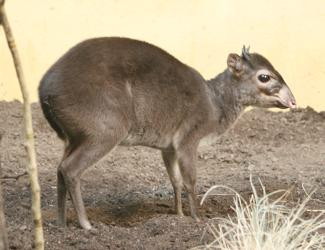Facts About Maxwell's duiker
The Maxwell's duiker is a charming small antelope native to the forests of western Africa. Scientifically known as Philantomba maxwelli, it shares its genus with the blue duiker and Walter's duiker. This species was first documented by Charles Hamilton Smith in 1827, and since then, three subspecies have been identified.
Appearance
Maxwell's duikers are easily recognizable by their slightly elevated backs, short legs, and small heads. They have short, rounded ears and a coat that typically ranges from grayish to brown, though individual colors can vary. Males, and occasionally females, sport short, spiky horns. Females are usually slightly larger than males, a feature known as sexual dimorphism.
Habitat
These antelopes thrive in areas with dense shrubbery and abundant vegetation. They inhabit the warm, moist lowland forests of countries like Benin, Nigeria, Liberia, and Togo. They prefer forest fringes, secondary forests, and even farmlands.
Diet
Maxwell's duikers have a diverse diet that includes fruits, seeds, and various types of vegetation. They particularly enjoy secondary vegetation and shrubs. Their diet can change with the seasons; during the early winter, they tend to consume more flowers and other fresh vegetation.
Behavior
One fascinating aspect of Maxwell's duikers is their use of preorbital glands for marking. Dominant males often use these glands to mark objects and other individuals, facilitating individual recognition and social interactions.
Reproduction and Lifespan
Female Maxwell's duikers give birth to a single calf each year after a gestation period of about 120 days. Calves are usually born during the dry season and weigh roughly one-tenth of their mother's weight. In captivity, these antelopes can live up to 10 years.
Conservation Status
Currently, the Maxwell's duiker is listed as "Least Concern" by the IUCN, but their population is declining. Conservation efforts are crucial to ensuring that this species continues to thrive in its natural habitat.

 Ivory Coast
Ivory Coast